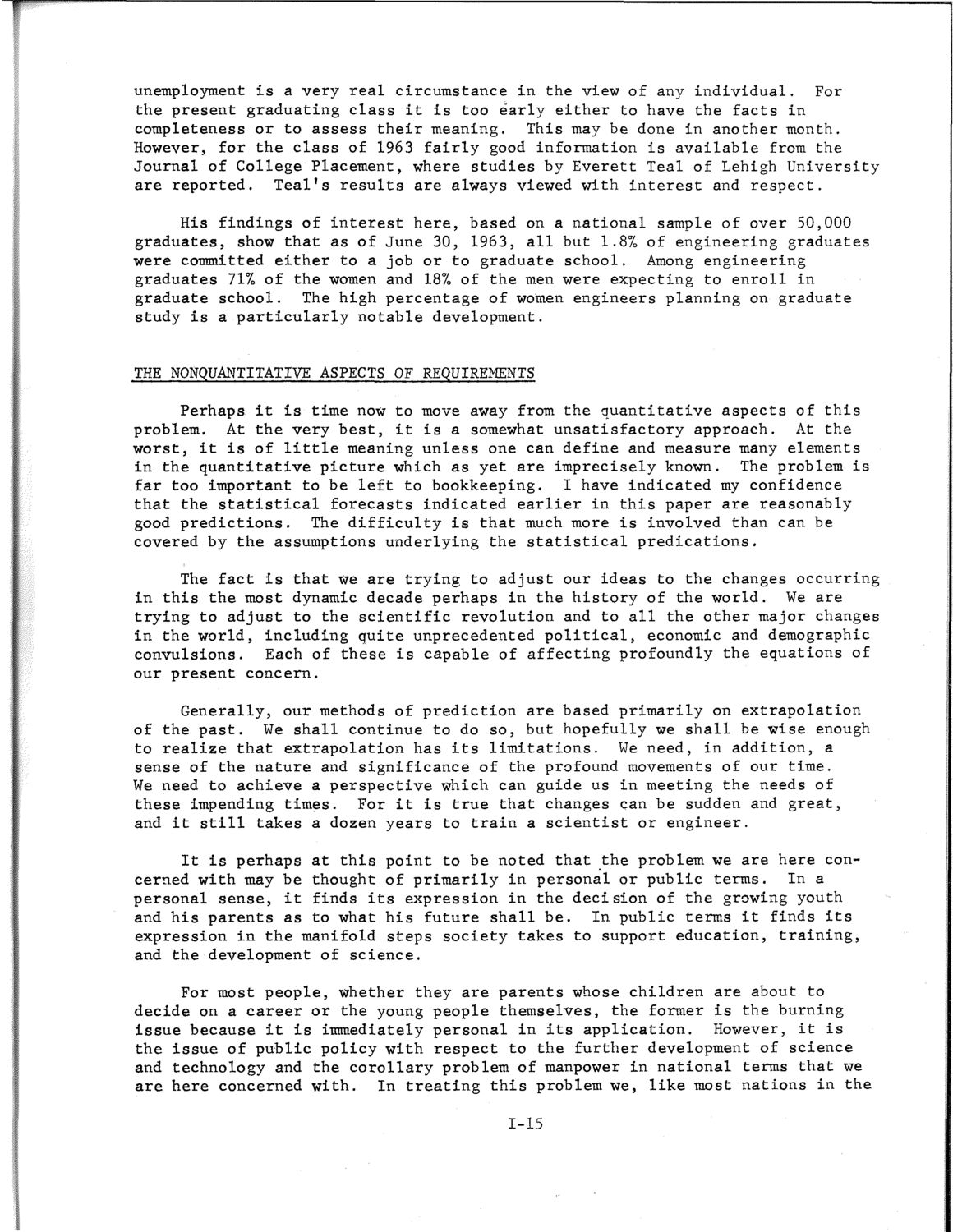| |
| |
Caption: SWE - Proceedings of the First International Conference of Women Engineers and Scientists
This is a reduced-resolution page image for fast online browsing.

EXTRACTED TEXT FROM PAGE:
unemployment is a very real circumstance in the view of any individual. For the present graduating class it is too early either to have the facts in completeness or to assess their meaning. This may be done in another month. However, for the class of 1963 fairly good information is available from the Journal of College Placement, where studies by Everett Teal of Lehigh University are reported. Teal's results are always viewed with interest and respect. His findings of interest here, based on a national sample of over 50,000 graduates, show that as of June 30, 1963, all but 1.8% of engineering graduates were committed either to a job or to graduate school. Among engineering graduates 71% of the women and 187o of the men were expecting to enroll in graduate school. The high percentage of women engineers planning on graduate study is a particularly notable development. THE NONQUANTITATIVE ASPECTS OF REQUIREMENTS Perhaps it is time now to move away from the quantitative aspects of this problem. At the very best, it is a somewhat unsatisfactory approach. At the worst, it is of little meaning unless one can define and measure many elements in the quantitative picture which as yet are imprecisely known. The problem is far too important to be left to bookkeeping. I have indicated my confidence that the statistical forecasts indicated earlier in this paper are reasonably good predictions. The difficulty is that much more is involved than can be covered by the assumptions underlying the statistical predications. The fact is that we are trying to adjust our ideas to the changes occurring in this the most dynamic decade perhaps in the history of the world. We are trying to adjust to the scientific revolution and to all the other major changes in the world, including quite unprecedented political, economic and demographic convulsions. Each of these is capable of affecting profoundly the equations of our present concern. Generally, our methods of prediction are based primarily on extrapolation of the past. We shall continue to do so, but hopefully we shall be wise enough to realize that extrapolation has its limitations. We need, in addition, a sense of the nature and significance of the profound movements of our time. We need to achieve a perspective which can guide us in meeting the needs of these impending times. For it is true that changes can be sudden and great, and it still takes a dozen years to train a scientist or engineer. It is perhaps at this point to be noted that the problem we are here concerned with may be thought of primarily in personal or public terms. In a personal sense, it finds its expression in the decision of the growing youth and his parents as to what his future shall be. In public terms it finds its expression in the manifold steps society takes to support education, training, and the development of science. For most people, whether they are parents whose children are about to decide on a career or the young people themselves, the former is the burning issue because it is immediately personal in its application. However, it is the issue of public policy with respect to the further development of science and technology and the corollary problem of manpower in national terms that we are here concerned with. In treating this problem we, like most nations in the 1-15
| |